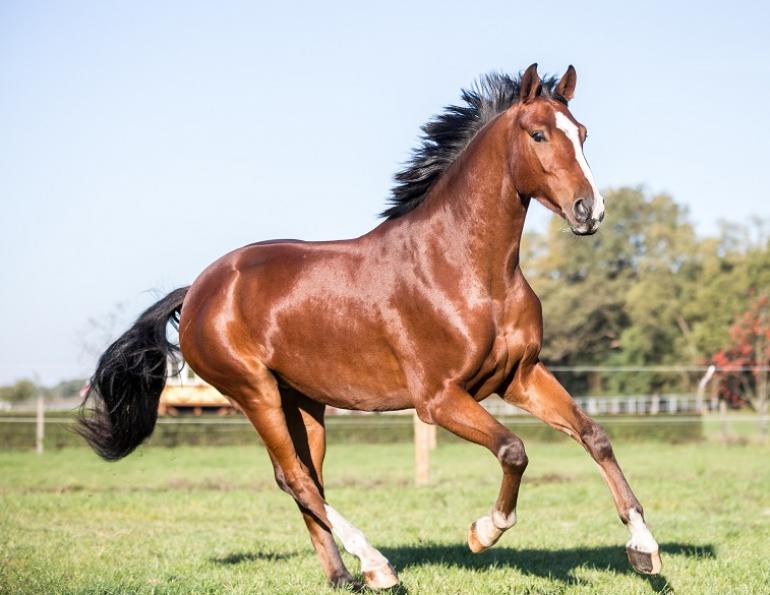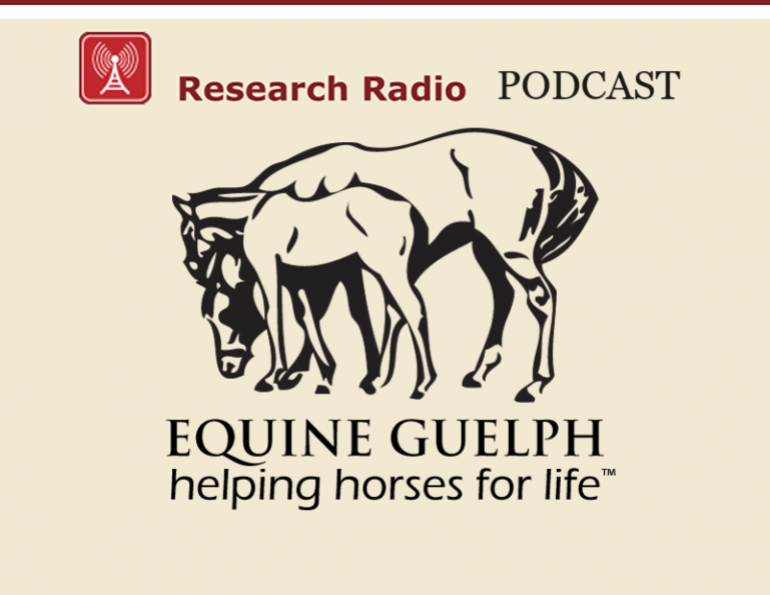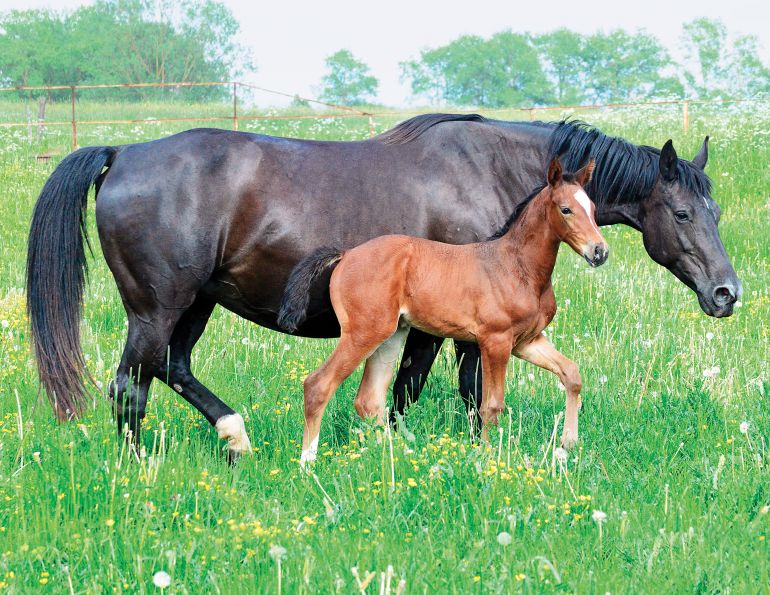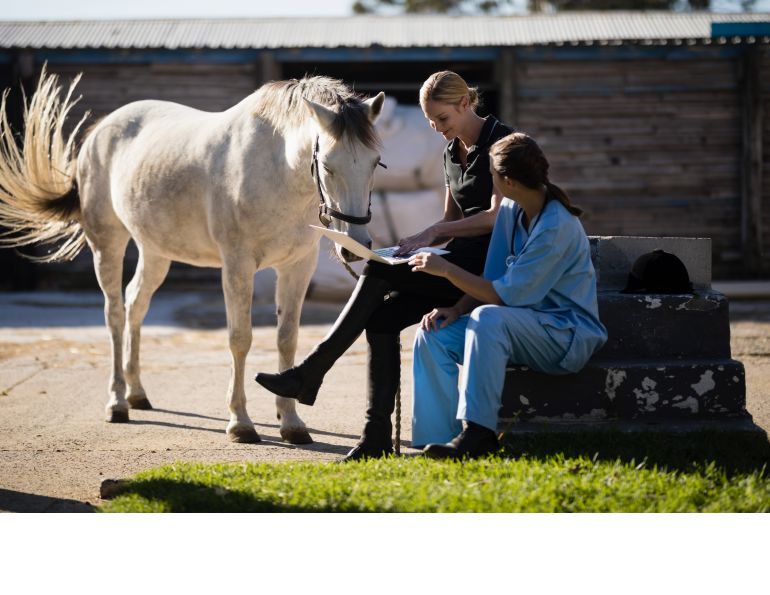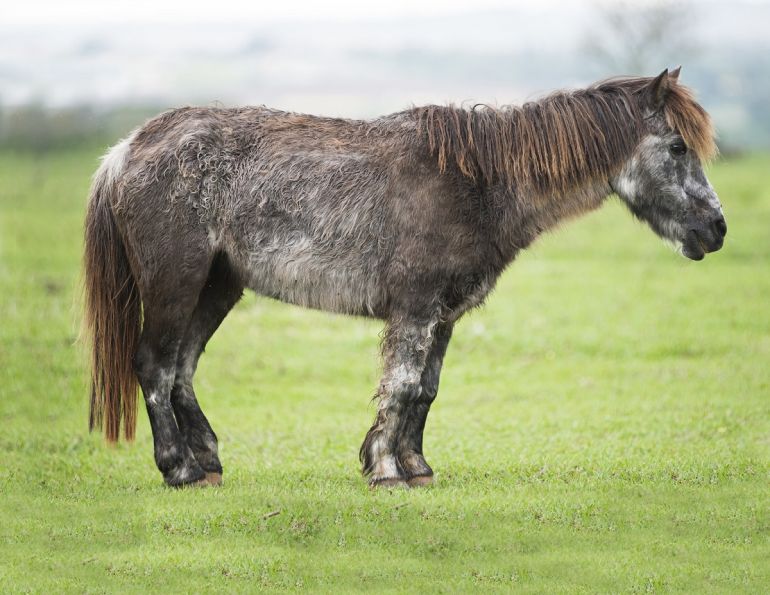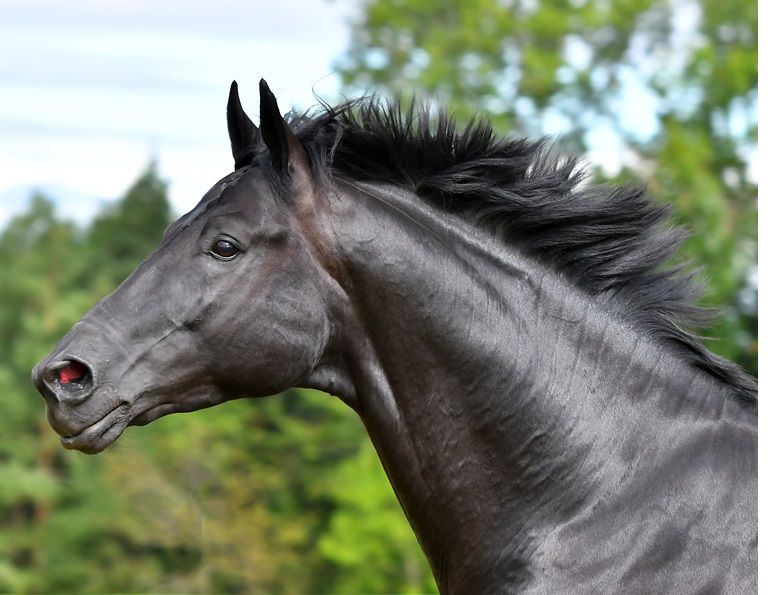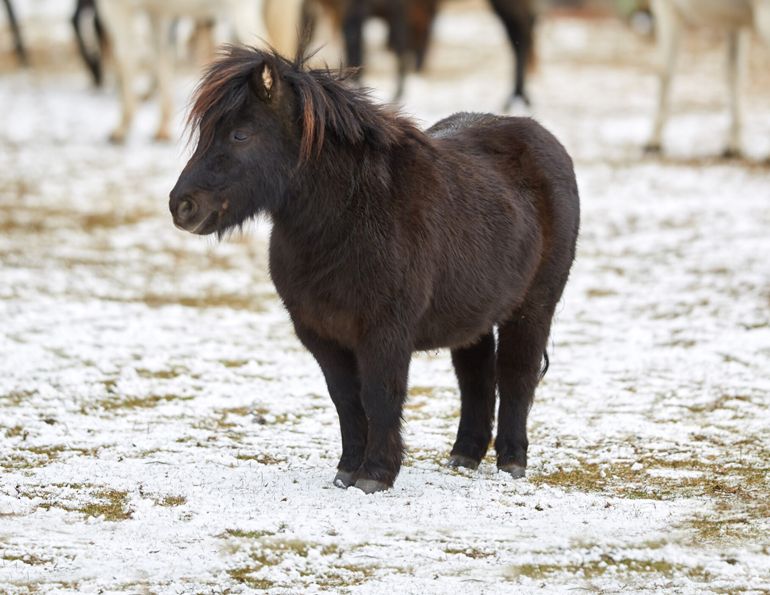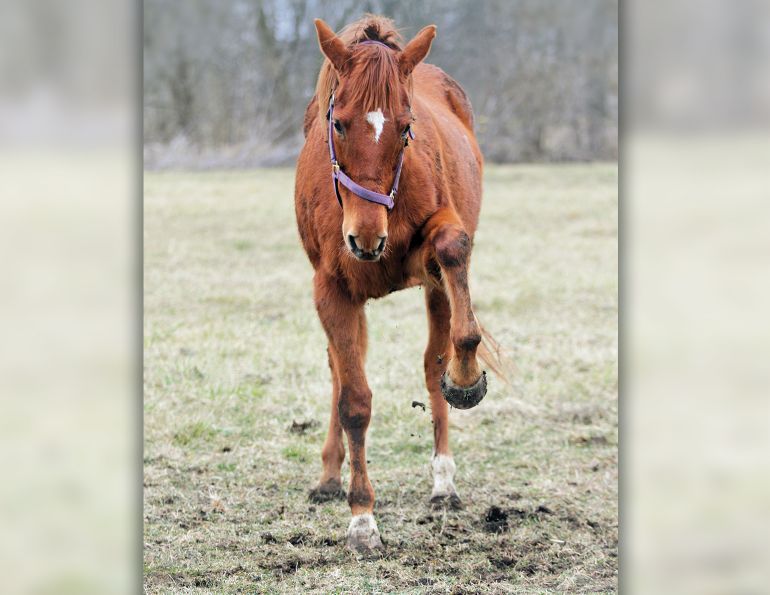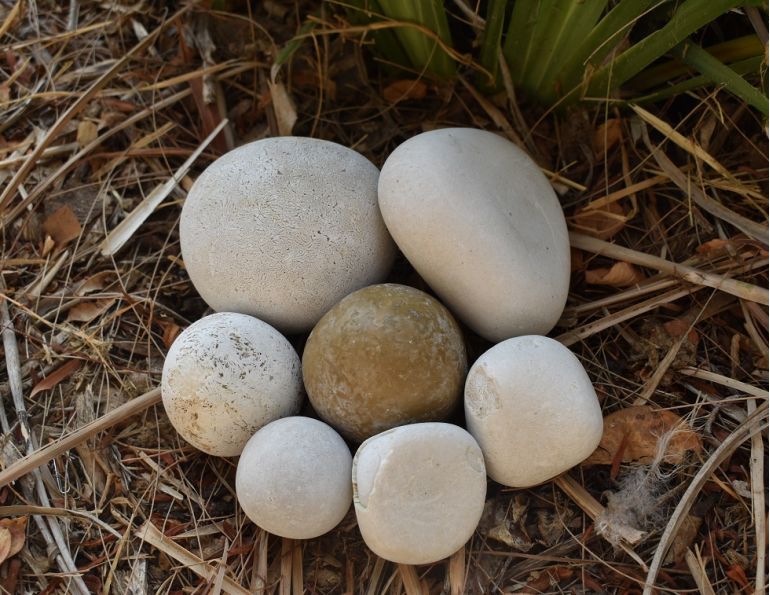By Amy Young, UC Davis Center for Equine Health
The large size of a horse means that their skin covers a large surface area, often making skin problems easy to see. However, although we can see them, we cannot always easily identify their cause. We teamed up with Dr. Stephen White, DACVD, UC Davis professor and chief of the veterinary hospital’s Dermatology Service, to bring to light some things you might not know about equine dermatology.
1. The skin is the largest organ of the body. It provides a barrier to the outside world, protecting the inside of the body from environmental assaults from bacteria, chemicals, heat, cold, moisture, and ultraviolet (UV) light. It allows the body to feel sensations, including itching and pain, can store water, vitamins, fat, and proteins, and produces hormones. Skin is often an outward indicator of the health of internal organs and systems.
2. A well-balanced diet is important for healthy skin. Minerals such as copper and zinc have roles in maintaining and repairing skin cells and ensuring the structural integrity and strength of skin. Essential fatty acids, especially omega-3 fatty acids, help skin retain moisture and key amino acids, and produce various substances that are vital to the health of skin and connective tissues. If access to pasture and good quality hay is limited, vitamin A, B, and E supplementation may be necessary to promote healthy skin.
Related: Scratching the Surface of Equine Skin Disease
3. Hooves, chestnuts, and ergots are modified skin structures. These horned skin structures grow continuously and are trimmed or broken off (chestnuts and ergots) or worn down (hooves). Chestnuts and ergots are natural growths that are largely cosmetic. However, in some cases abnormal growth can indicate health conditions such as laminitis. Interestingly, chestnuts are like fingerprints in that they are unique to each horse and can help with individual identification.
4. Mane and tail hair is permanent; body hair is temporary. Equine hair is also comprised of modified skin tissue. Body hair is temporary and sheds seasonally. Permanent hair, such as mane, tail, and eyelash hair, has important defensive roles, including waterproofing, insulating blood vessels, and protecting eyes from debris. Although this type of hair falls out, it does not shed regularly, so permanent hair can be used to evaluate nutrition, exposure to environmental toxins, and drug administration over time.
5. Equine skin can be damaged by sun and UV light. Non-pigmented skin is especially prone to sunburn from extended exposure to UV light. Photosensitization, a sensitivity to UV light that can lead to ulceration of the skin, is a separate condition, but can be difficult to distinguish based on outward appearance. Photosensitivity can be an indicator of underlying health conditions such as liver disease or ingestion of bacterial or fungal toxins.
Related: Myth: A Shiny Horse is a Healthy Horse
6. Ivermectin can be a useful tool for treating summer sores, but may only be effective after surgical intervention. Summer sores, or habronematidosis (formerly habronemiasis), are caused by the larval form of stomach worms in the genus Habronema. While ivermectin has historically been effective against worms in the stomach (intestinal strongyles), it often needs to be used along with other medical treatment such as corticosteroids and/or surgical intervention (debulking or cryotherapy) for treating Habronema skin lesions.
7. Frequent bathing of a horse’s legs will not make scratches worse. It is important to keep horses’ legs clean and bathing them often has not been shown to cause scratches, or to make them worse. Medicated shampoos can sometimes even improve the condition. Although bathing itself is not problematic, ensure that legs are dried after washing, especially before going into a stall or getting wraps or boots put on as these can trap moisture against the skin, which can aggravate scratches.
8. Chronic skin diseases can predispose affected horses to secondary infections. Secondary bacterial or yeast infections often develop as a result of skin inflammation. These infections can cause increased discomfort, worsen existing inflammation, and delay healing. Antibiotics may be required to treat the infection.
9. Breeders can use genetic tests to avoid producing foals affected with some of the most severe equine skin conditions. Junctional epidermolysis bullosa (JEB) and fragile foal syndrome type 1 (FFS1) are inherited skin diseases that result in death or humane euthanasia of affected foals at early ages due to the severity of clinical signs. Although life expectancy for horses with hereditary equine regional dermal asthenia (HERDA) is longer, most affected horses are eventually humanely euthanized. Note: The UC Davis Veterinary Genetics Laboratory offers genetic tests for all of these diseases. Genetic testing information can be used to avoid breeding carriers and producing affected foals.

10. Leave ear plaques alone. Touching equine aural plaques — white, crusty, wart-like growths on the inside of horses’ ears — can do more harm than good. These crusty patches are not very attractive, but they usually are not a source of discomfort. Trying to scrape them away can cause pain and may make the horse head shy, and the plaques usually return anyway. Researchers from UC Davis and the University of Minnesota reported on the success of the medication imiquimod for treating aural plaques. This treatment is expensive and labour-intensive, though, so it is generally reserved for severe cases.
Related: Equine Skin Allergies
Related: How to Diagnost, Treat & Prevent Rain Rot in Horses
Printed with the kind permission of the UC Davis Center for Equine Health. The UC Davis Center for Equine Health is dedicated to advancing the health, welfare, performance and veterinary care of horses through research, education and public service.



